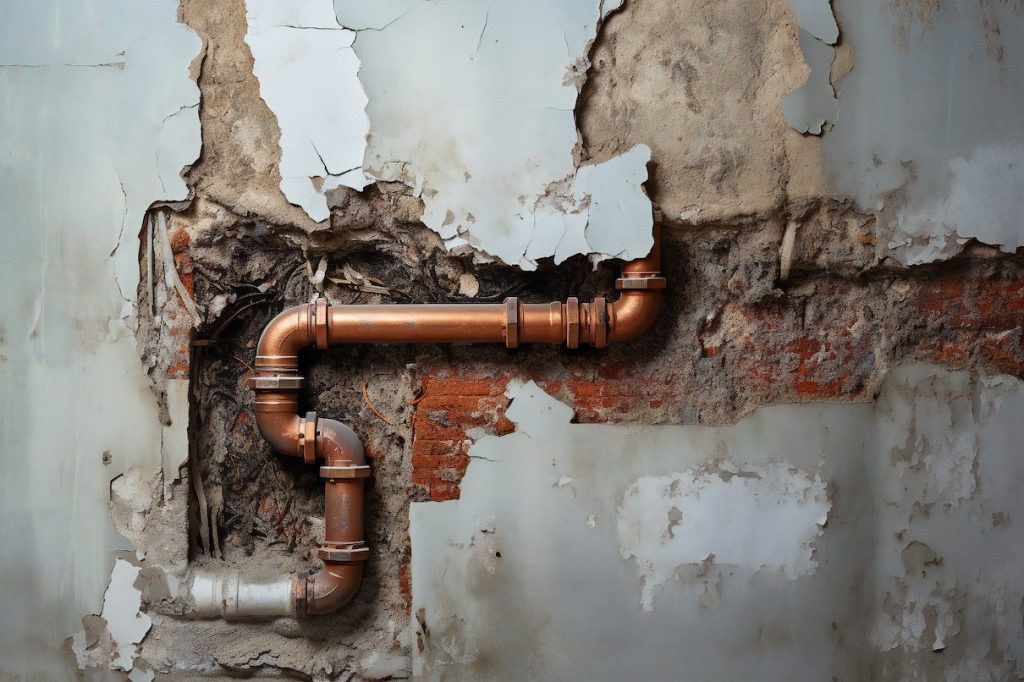Most plumbing issues and causes of water waste are from hidden, silent, slow leaks from pipes, appliances and fixtures in your home. These leaks can cost you hundreds or even thousands of pounds in repair bills. But identifying the warning signs of hidden plumbing leaks early enough could stop the leak from causing expensive structural damage to your home and furniture. Leaks can increase your water bills over time as they worsen and cause damage to your property. They’re also a major source of mould and mildew that may affect you or your family’s health, don’t ignore them.

So, how can you find out and determine if and when professional help is needed? Don’t panic! Complheat has put together some tips and professional guidelines on what to look out for and how to keep your hidden plumbing leak issues to a minimum with consistent checks.
Firstly, if you have a water meter installed, one of the most effective ways to uncover a plumbing leak is to detect any unexplained or unusually high jumps in your bills. The best time to carry out a water meter test is when nobody is home. Stop using all water sources in your home for a minimum of three hours. This includes both indoor and outside appliances and fixtures such as showers, toilets, washing machines, dishwashers and garden sprinkler systems. Write down the number on your water meter, then wait at least three hours and check your water meter again. If the meter has still been clocking up – unfortunately you may have a leak on your hands. Each time your water bill lands on your doormat, be sure to check it against the previous bill. An increase in your bill without any rational cause or change of household routine can also be a sign that you may have a hidden plumbing leak.
Start by looking in the obvious places, such as visible pipes, sinks, showers, toilets, washing machine, dishwashers, sprinkler and irrigation systems. Puddles, drips or soft spots on or around these fixtures may be an indication of a leak that needs to be repaired. Be aware of more serious problems like pinhole leaks behind walls which can slowly cause damage to your homes infrastructure and should be dealt with as soon as possible. Also, look for any rippling, warping, sagging or staining on all home ceilings walls and floors which may be caused by a hidden plumbing leak. If you cannot get into or behind those areas to get to the leak and see what is causing it, you will need to call a professional. Repairing a leak early will significantly reduce the risk of additional costly damage.
If your bathroom, kitchen or utility area floor tiles have become loose or stained then you may have a hidden water leak seeping into the floor from nearby piping. This is because water can cause floorboards to rot. Once this starts to happen, they become weak and begin to bend under your weight – causing expensive damage to your property. If you start to experience damp carpets, then it could be water seeping into the floor and being absorbed by your carpets. This can also can be caused by nearby pipes causing leaks. Mould and mildew are pretty common in shower corners but look in areas where it doesn’t usually gather – this could be a big sign that you have a pipe leak. A hidden leak in your wall is a potential breeding area for mould and mildew because they love dark, moist places. Old water that accumulates smells musty and earthy, so look for mould and mildew on non-shower walls or in unusual areas. So if you have cleaned your bath and shower areas but they still smell musty then you may have a hidden leak. Check under basins and around sinks for mould or any earthy musty smells as these may be signs of a leak. If your home is over 25 years you should be more vigilant in your check as older as plumbing systems decline over time. Notice any wallpaper or wall paint that is stained, blistered, chipping, cracking, or bubbling up. If you do notice any of these it may be caused due to water seeping in from behind its surface. In such circumstances it is best to call for professional for help in order to minimise any additional damage.
It doesn’t always have to be water you can see! Listen out for any faint dripping sounds when everything in your house is quiet. If you hear anything that you think sounds like a drip, hunt it out as soon as possible and don’t let a small hidden plumbing leak become a big issue!